Introduction
To measure directional migration, the Transwell® Boyden chamber has been widely regarded as the mainstay in vitro method. However, it is known for being technically tricky, hard to troubleshoot, and frequently yielding variable data.
The new IncuCyte® Chemotaxis System from Sartorius offers a robust walkaway, fully kinetic and image-based solution in 96-well plates. The ClearView 96-well plate consumable consists of an ordered array of 8 μm pores on a viewing surface in each well.
The IncuCyte® live-cell analysis system is used to visualize the directional migration of cells across the surface and toward chemoattractant positioned in the reservoir of the plate and IncuCyte® Chemotaxis Cell Migration image analysis software is used to quantify this migration. This article discusses the validation of this integrated solution for adherent as well as non-adherent cell types.
Major advantages include:
- Full visualization of the cell biology
- Low cell usage
- Easier workflows
- Relevant surface biology
- Highly reproducible 96-well data
IncuCyte® ClearView 96-well cell migration plate
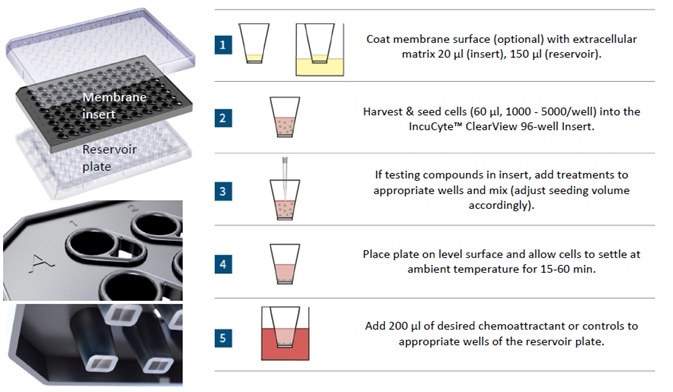
- The membrane insert is placed into the pre-filled reservoir plate
- They are then placed into the IncuCyte S3®
- Images are captured every 30-120 minutes (10x) for one to two days
Visualize and analyze chemotaxis in real time

Visualize cell migration (top panel)
- Time-lapse images of a HT1080 cell migrating towards a pore (orange ring) and chemoattractant 10% FCS (1&2)
- The cell migrates through the pore (3), and then appears on the underside of the membrane (4)
- Real-time imaging and analysis of cells on the top surface (yellow) and cells on the underside (blue)

Automated image analysis (bottom panel)
- Acquisition of high definition phase contrast images on the top and bottom surfaces of the membrane
- Cells located on the top surface (outlined in yellow) are separated from the bottom surface (outlined in blue) of the membrane by the automated image processing. Pores are outlined in orange.
- Images are processed as they are captured and data can be plotted in real time
Real-time kinetic quantification
Measure cell appearance on bottom surface
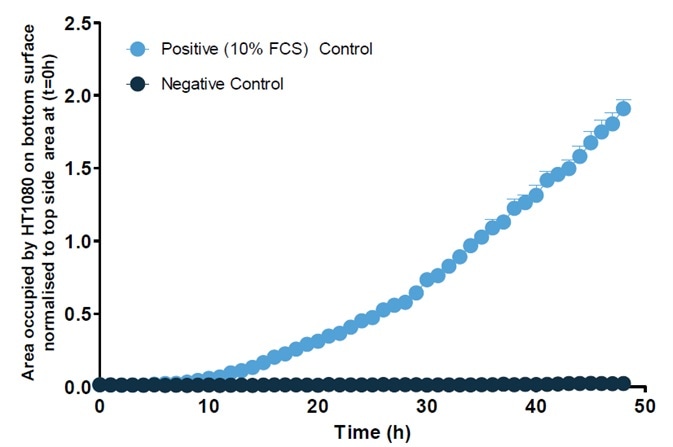 Adherent cells, for example, tumor cells.
Adherent cells, for example, tumor cells.
- The above data illustrates the response of HT1080 cells (1000/well) to 10% FCS over 48 hours. Images are acquired every 2 hours.
- Adherent cells migrate across the membrane, pass through the pores, and then remain attached to the bottom surface of the membrane
- The loss of surface area coverage by cells on the top surface of the membrane or the gain of cell area coverage on the bottom surface of the membrane is measured
Measure cell loss from top surface
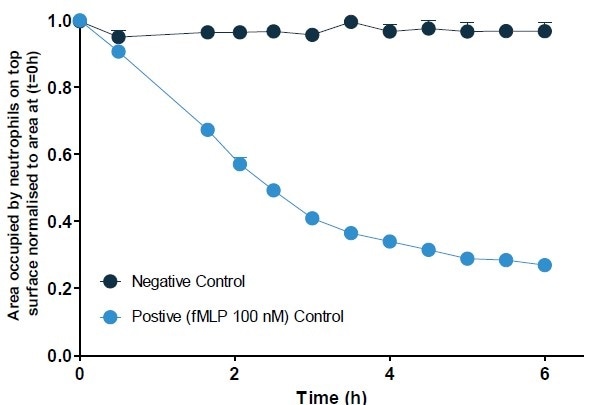
Non-adherent cells, for example, immune cells.
- The above data illustrates the response of neutrophils (5000/well) to fMLP (100 nM) over 6 hours. Images are acquired every 30 minutes.
- Non-adherent cells migrate across the membrane, pass through the pores, and then enter into the reservoir plate
- The loss of surface area coverage by cells is measured over time.
Reproducible 96-well assays suitable for screening
 Robust 96-well assay
Robust 96-well assay
- Cell density titrations show low cell usage in the assay (assay run at 5K/well)
- Representative 96-well microplate graph illustrating Jurkat migration towards the chemoattractant SDF-1α (serial dilutions of chemoattractant across the plate)
- Z’ values ranged from 0.5 to 0.7 for four replicate plates over three days
- Reproducible measurements of SDF-1α potency (EC50 value range 19 to 33 nM) between and within days were provided by corresponding concentration-dependent response curves
Measure pro-/anti-migration effects
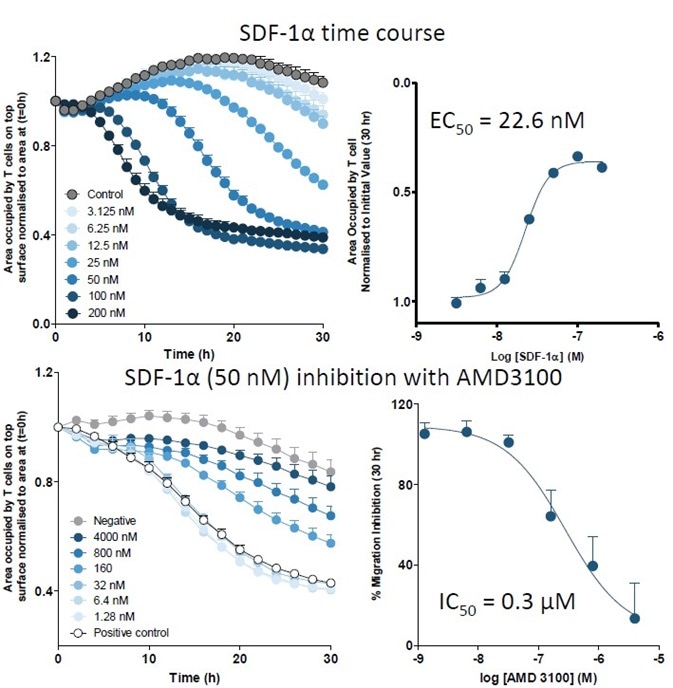 Primary T cell CXCR4 pharmacology
Primary T cell CXCR4 pharmacology
- Separated human primary T cells (5K cells/well) were seeded onto a Matrigel® (50 μg/ml) coated ClearView plate, followed by the measurement of the pharmacological response through the endogenous CXCR4 receptor over 30 hours
- Data (top panel) shows the time course- and concentration-dependant response to the CXCR4 agonist SDF-1α
- AMD3100, a well-known CXCR4 antagonist with an IC50 of 0.3 μM, can inhibit the response to SDF-1α (50 nM, bottom panel)
Migration across relevant 2D surface
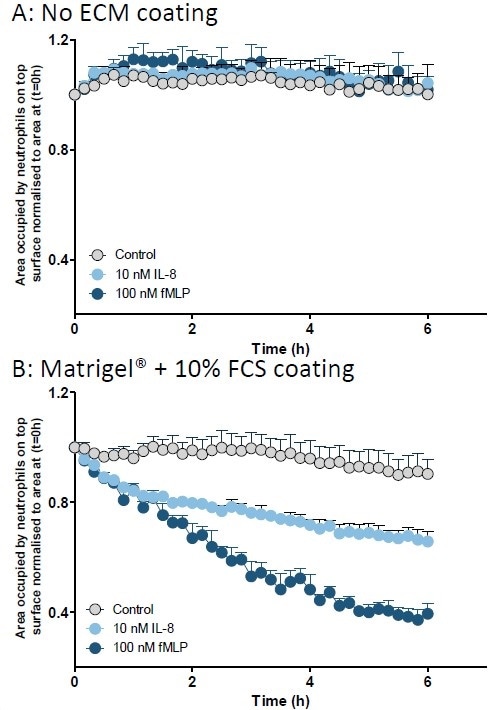
Measurement of relevant surface contact-mediated cell migration
- Cells should migrate across the membrane surface towards the chemoattractant to achieve the low pore density of the ClearView membrane
- Neutrophils seeded on an uncoated ClearView membrane did not migrate towards the chemoattractants IL-8 and fMLP (A)
- However, clear chemotactic profiles were observed for those on Matrigel®-coated membranes (B)
- These results reveal the key role played by integrin and/or cell surface receptor interactions with the substrate in neutrophil chemotaxis in this model
Invasion through 3D biomatrix
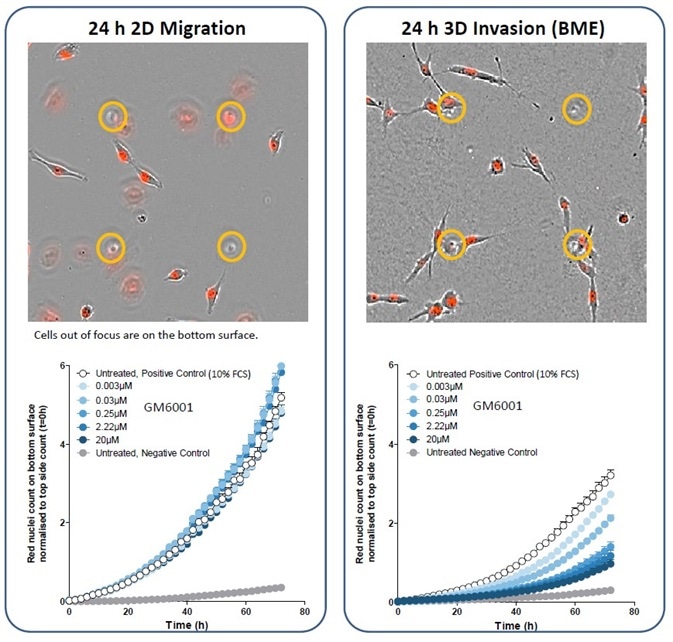 Using IncuCyte® ClearView plate for invasion assays
Using IncuCyte® ClearView plate for invasion assays
- Data collected for nuclear red labeled HT1080 cells (1K/well) grown directly on the ClearVeiw plate (left panel) or within a layer of basement membrane extract (BME, 5mg/ml, right panel) and moving towards 10% FCS
- The response to FCS for directional migration is larger over 70 hours (left panel), but a smaller response is observed for invasion through BME (right panel). IncuCyte® high-definition images show mesenchymal-like morphology and filopodia-like projections into the 3D biomatrix.
- GM6001, the matrix metalloproteinase inhibitor, can inhibit cell invasion but not migration in a concentration-dependent manner
Author acknowledgement
N.J. Bevan1, C.L. Szybut1 , B. O’Clair2 , M. Tikhonenko2, L. Gedge1, D.M. Appledorn2 & D.J. Trezise1.
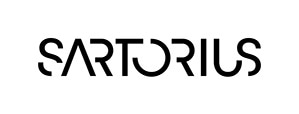 Sartorius
Sartorius
Sartorius is a leading international pharmaceutical and laboratory equipment supplier. With our innovative products and services, we are helping our customers across the entire globe to implement their complex and quality-critical biomanufacturing and laboratory processes reliably and economically.
The Group companies are united under the roof of Sartorius AG, which is listed on the Frankfurt Stock Exchange and holds the majority stake in Sartorius Stedim Biotech S.A. Quoted on the Paris Stock Exchange, this subgroup is comprised mainly of the Bioprocess Solutions Division.
Innovative Technologies Enable Medical Progress
A growing number of medications are biopharmaceuticals. These are produced using living cells in complex, lengthy and expensive procedures. The Bioprocess Solutions Division provides the essential products and technologies to accomplish this.
In fact, Sartorius has been pioneering and setting the standards for single-use products that are currently used throughout all biopharmaceutical manufacturing processes.
Making Lab Life Easier
Lab work is complex and demanding: Despite repetitive analytical routines, lab staff must perform each step in a highly concentrated and careful way for accurate results.
The Lab Products and Services Division helps lab personnel excel because its products, such as laboratory balances, pipettes and lab consumables, minimize human error, simplify workflows and reduce physical workloads
Sponsored Content Policy: News-Medical.net publishes articles and related content that may be derived from sources where we have existing commercial relationships, provided such content adds value to the core editorial ethos of News-Medical.Net which is to educate and inform site visitors interested in medical research, science, medical devices and treatments.